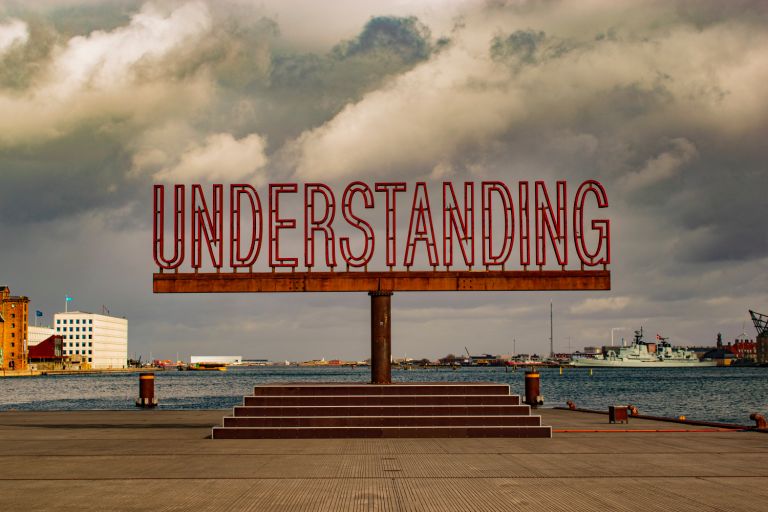
Increase the adoption of your international multisite through cultural awareness
Often projects involving the central development of multiple Web sites (multisite) are set up in an internationally oriented environment. The "multi" in multisite often refers to multiple language/country combinations of websites. When employees from different countries work within the same multisite structure, it is important to think about the cross-cultural differences in advance and what the associated impact will be on the multisite project. The following are some of the issues we have seen in over 100 multisite implementations in recent years, many of which are international in nature.
Why is the cultural aspect important?
Since the Internet is globally accessible, it is important to provide an inclusive and accessible user experience that takes into account the diverse cultural backgrounds of users.
In this article, we will assume a European context, but of course you can also view the examples in this article in a broader context. Europe is a prime example of cultural diversity, with countless countries and regions, each of which has its own unique cultural identity and traditions. Within these regions there are differences in language, customs, values and aesthetics, which means that a one-size-fits-all approach to Web design and content is unlikely to be effective. By accounting for cultural sensitivity in multisite development, organizations can be more responsive to the needs and expectations of their users, which can lead to higher engagement, customer satisfaction and ultimately market success.
So because you want to create a "custom" experience for your visitor that matches cultural values, as a content manager, you need to consider that flexibility in your CMS configuration.
What forms of localization should you consider?
We'll start simply with a few practical examples to explain why simply copying a page to another language is often not enough. For example, if you have a blog module and an events module activated on your website, it is important to have the date and time notation of those modules visibly different in languages that work with a different date and time format. The same goes for currencies and units of measurement. You often incorporate this into your schema.org data (for discoverability), and so you need to figure this out ahead of time for the different countries you're going to support in your CMS configuration.
Also, the labels on your website, such as "previous," "next," "news overview," "job overview," etc., are often generated automatically. Make sure you think about translating the labels ahead of time and include them immediately. If you do not do this and your CMS configuration is not prepared for this, you will soon have, for example, a button 'all vacancies' on your German-language website. You don't want to customize these buttons piece by piece, but manage them centrally.
What forms of multisite are there?
To best match the language and country combination of the website to the target audience, you have two choices. You can choose a separate domain per country, for example www.plate.de for the German market and www.plate.nl for the Dutch market. You can also decide to place all content within one domain and then use an extension per country, for example www.plate.com/nl or www.plate.com/de.
Both forms - multiple domains/websites or a single domain - have advantages and disadvantages. There are no one-size-fits-all solutions; the best choice depends on the unique situation of each project. Factors such as local targeting, domain authority, cost, management, technical requirements, brand rules and monitoring must be considered.
A multi-domain strategy offers advantages such as better local targeting and independent domain authority, but also has disadvantages such as more complex management and scattered link value.
A single domain solution offers concentrated domain authority and lower costs, but may have limited local targeting and more difficult language delineation. Want to know all about this? Then read this article where we provide a comprehensive analysis on the different SEO strategies for seperate or single domains.
Cultural dimensions combined with website design/design system
When designing an international website, it is important to think more from a "design system" than from a loose website design. A website design can be the result of a design system, but because a design system allows you to look at a design more abstractly, it allows you to create flexible (international) websites because you take multiple factors into account in a design system.
When creating a design system for a multisite, it is important to be aware of the following cultural dimensions:
Influence of cultural dimensions on design preferences
Individualism vs. collectivism: In cultures with a high degree of individualism, the emphasis is on personal expression and unique design elements. In collectivist cultures, the focus is on cooperation, harmony and shared values, which can lead to more standardized and common design elements.
Cultures with a high degree of individualism are found primarily in Western countries, where the emphasis is on personal independence, self-expression and individual achievement. Examples of countries with high levels of individualism include the U.S., Britain, the Netherlands, Denmark, Norway and Germany.
In Europe, there are some countries that have relatively lower levels of individualism (and thus higher levels of collectivism) compared to other Western countries. Some examples are: Portugal, Greece, Spain and Romania.
Uncertainty avoidance: Cultures with high uncertainty avoidance prefer clear and structured Web designs with explicit navigation and instructions. Cultures with low uncertainty avoidance are more open to innovative and experimental designs. Examples of countries where this is true include Greece, Portugal, Belgium, Spain, Italy, France and Germany.
Different design preferences within European cultures
- Southern European countries: More expressive and artistic designs, with vibrant colors and detailed illustrations.
- Eastern European countries: A combination of traditional and modern design elements, with a focus on local motifs and symbolism.
Color preferences and associations in different cultures
Colors have different meanings and associations in different cultures, which affects the use of colors in Web design. Careful research into color meanings in culture is essential to avoid unintended messages.
- Red: In the United Kingdom, red represents danger or passion, while in Spain it is associated with life and happiness.
- Green: In Ireland, green symbolizes national heritage, while in Germany it is associated with hope and ecological awareness.
- Blue: In France, blue is associated with freedom, equality and fraternity, while in Greece it is associated with protection from the evil eye.
In summary, then, the challenge is to combine these cultural differences with a cohesive brand identity.
Relevance of content in terms of culture
It is important to adapt content and imagery to the cultural context of the target audience. By this content we do not only mean images, but also textual examples and references can ensure that your message is better conveyed to the reader. To make this point concrete, we hereby provide 5 different components on which you can check your content for cultural relevance.
- Research the cultural background of the target audience: Delve into the norms, values and traditions of the countries in which you operate to better understand what kind of content and imagery will be most relevant and appealing.
- Avoid stereotypes and generalizations: It is essential to avoid using imagery and content that reinforces prejudices or clichés. Instead, strive for authentic and accurate portrayals of diverse cultures.
- Use local language and expressions: Don't just translate the text, make sure to localize the content appropriately to match the expectations and language of the target audience.
- Adapt imagery for cultural sensitivities: Consider religious, political and social sensitivities when choosing images and visual elements. This may mean avoiding or adjusting certain colors, symbols or images so as not to be offensive or inappropriate for certain cultures.
- Be empathetic and inclusive: Ensure that content and visuals represent a wide range of cultures, ethnicities, genders and age groups so that everyone feels recognized and valued.
By taking these guidelines into account and adapting content and imagery to the cultural context of the target audience, organizations can increase their communication effectiveness and build a positive, consistent and at the same time appealing brand image in different markets.







